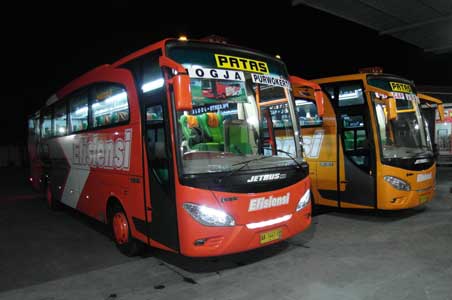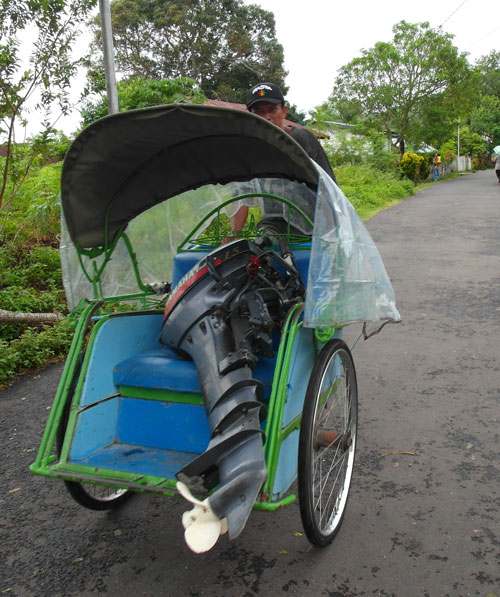| The Kalimantan bus | The Java bus |
|---|---|
 |  |
After many months on the high seas and highways of Indonesia I’ve finally made it into the Javanese heartland, and I’m in shock. The cause of my shock is, principally, shock absorbers: those things that I had assumed had been rattled out of every bus in the archipelago. The bus on the left is one I took earlier this month between Simitau and Putussibau through uninterrupted hours of oil palm in West Kalimantan. But it could have been virtually any bus I have taken over the last year. (The driver, squatting under his rust-bucket for unscheduled maintenance, is fitting a cleaner oil filter with the help of a screw driver and a flattened out Red Bull tin. Which allowed me to go and do some maintenance behind a bush.) The bus on the right is one I took last week, along Java’s southern highway. Not only does it have shock absorbers, it has free juice and buns, air conditioning and flat screen movies. It stops in special rest stations with rows and rows of sparklingly clean loos.
I could (and will) write at some length about the disparities between Java and the rest of Indonesia. But for now I think the stats are enough:
| Kalimantan Bus | Java bus | |
|---|---|---|
| Distance travelled | 110 kms | 105 kms |
| Time taken | 10 hours | 3.75 hours |
| Cost | 100,000 rupiah | 40,000 rupiah |
| Bruise factor | Ouch! Very ouch. | Bruise? What's a bruise? |
On the other hand, the flat screen TVs on the Java bus play those really annoying “innocent people being surprised by stupid gags” videos, on a loop. Where as in Kalimantan, I got to spend my 10 hours contemplating the special positioning of the windscreen sticker montage. The implication, obviously, is that the Father of the Nation had public health on the brain…


